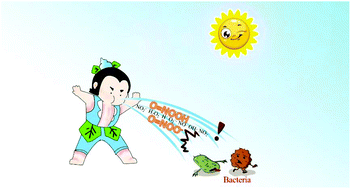Cold atmospheric plasma activated water as a prospective disinfectant: the crucial role of peroxynitrite†
Abstract
The socio-economic, environmental, and health implications of diseases caused by pathogenic microorganisms and their treatment using conventional antimicrobials are significant. The increasing resistance to antibiotics and detrimental biological side effects of many common antibiotics on human health and on the ecosystem have driven the search for new cost-effective and highly-efficient sterilization treatments and agents that are more environmentally benign. Plasma activated water (PAW), a product of cold atmospheric plasma reacting with water, is a promising broad-spectrum biocidal agent whose biochemical activity is attributed to the presence of a rich diversity of highly reactive oxygen and nitrogen species (RONS). The transient activity of PAW, where PAW reverts to water within days of storage and application, suggests that it can become a green alternative to conventional chemical treatment methods, yet the issues of scale up and the not fully understood mechanism of activity remain. In this study, we sought to explore the antibiotic potential of PAW generated from a plasma jet in a continuous flow reactor and determine the individual and combined contribution of thus-generated reactive chemistries in PAW for organism inactivation. Treatment of Escherichia coli with PAW led to more than a 4-log reduction, while exposure to an equivalent single dose of hydrogen peroxide (H2O2), nitrate (NO3−) or nitrite (NO2−) to that found in PAW failed to attain the same level of reduction. Peroxynitrite was identified as a critical bioactive species, particularly under acidic conditions, originating from the synergistic plasma effects (like the reactions of H2O2, NO3−, NO2− and other existing short-lived species like OH radicals in PAW). This research successfully demonstrated the possibility of PAW being an effective environmentally benign disinfectant, the activity of which is closely linked to the generation of peroxynitrite, providing much needed insights into the fundamental aspects of PAW chemistry required for optimisation of the biochemical activity of PAW and translation of this decontamination strategy into real life applications.



 Please wait while we load your content...
Please wait while we load your content...